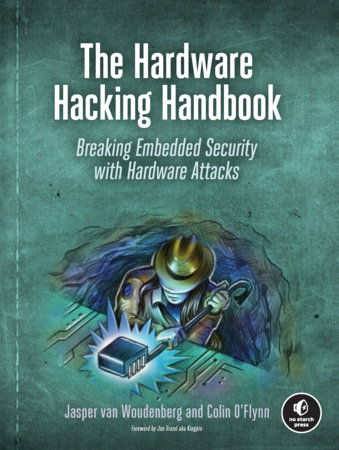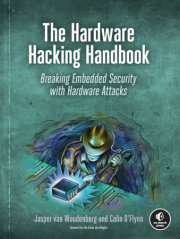Introduction
Chapter 1: Dental Hygiene: Introduction to Embedded Security
Chapter 2: Reaching Out, Touching Me, Touching You: Hardware Peripheral Interfaces
Chapter 3: Casing the Joint: Identifying Components and Gathering Information
Chapter 4: Bull in a China Shop: Introducing Fault Injection
Chapter 5: Don’t Lick the Probe: How to Inject Faults
Chapter 6: Bench Time: Fault Injection Lab
Chapter 7: X Marks the Spot: EMFI Memory Dumping of Trezor
Chapter 8: I’ve Got the Power: Introduction to Power Analysis
Chapter 9: Bench Time: Simple Power Analysis
Chapter 10: Splitting the Difference: Differential Power Analysis
Chapter 11: Advanced Power Analysis
Chapter 12: A DPA/SCA Lab: Breaking an AES-256 Bootloader
Chapter 13: No Kiddin’: Real-Life Examples
Chapter 14: Think of the Children: Countermeasures, Certifications, and Goodbytes
Appendix A: Maxing Out Your Credit Card: Setting Up a Test Lab
Appendix B: All Your Base Are Belong to Us: Popular Pinouts













